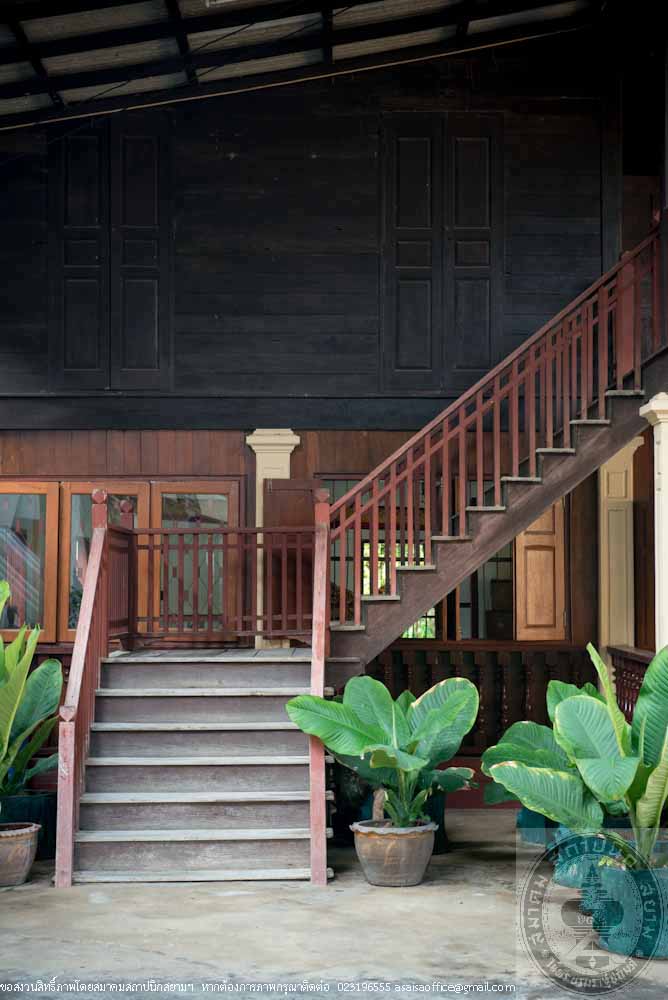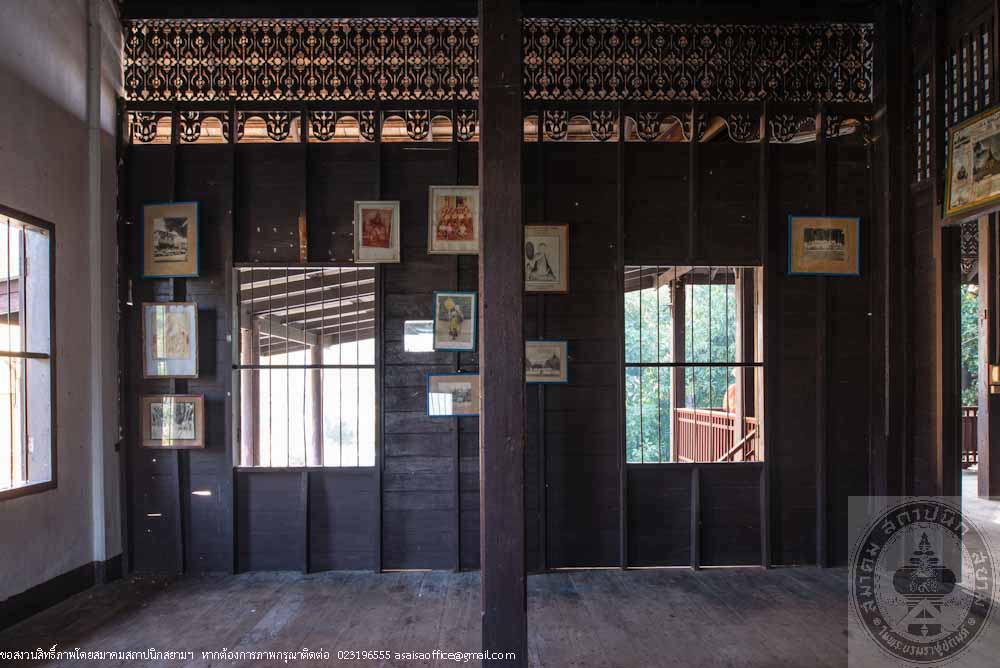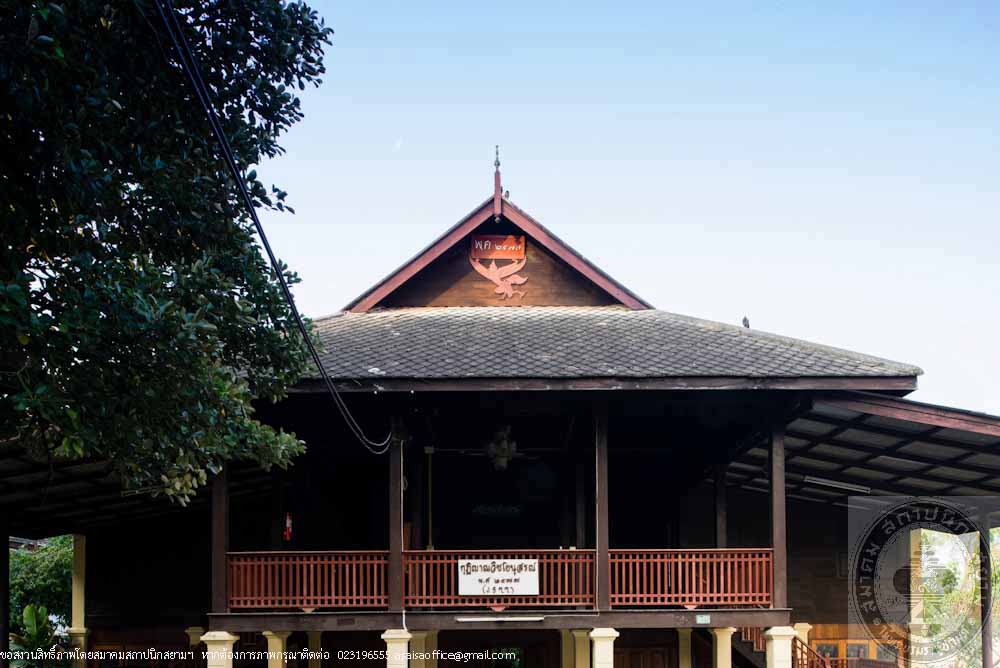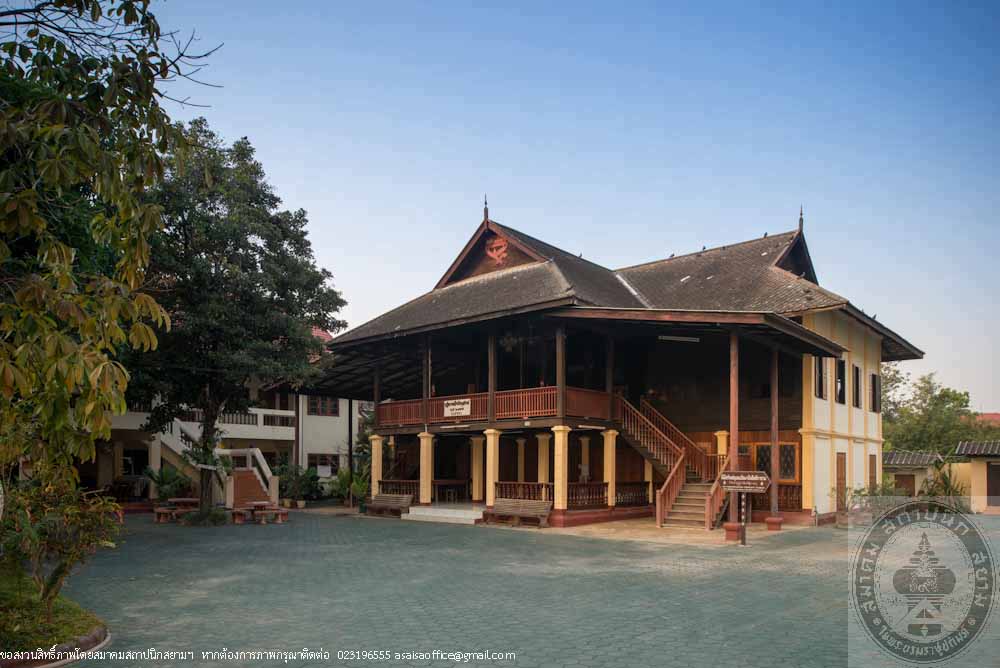กุฏิญาณวิชโยนุสรณ์ วัดพานิชสิทธิการาม
กุฏิญาณวิชโยนุสรณ์ วัดพานิชสิทธิการาม
ที่ตั้ง เลขที่ 460 บ้านป่าซาง หมู่ที่ 1 ตำบลป่าซาง อำเภอป่าซาง จังหวัดลำพูน
สถาปนิก/ผู้ออกแบบ ครูบาผัด พรหมเสโน
ผู้ครอบครอง วัดพานิชสิทธิการาม
ปีที่สร้าง พ.ศ. 2477
ประวัติ
วัดพานิชสิทธิการามสร้างเมื่อปี พ.ศ. 2463 โดยกลุ่มพ่อค้าคหบดีชาวบ้านป่าซางใต้ ซึ่งเดิมเคยเป็นศรัทธาเดียวกันกับของวัดป่าซางงามมาก่อน (ซึ่งตั้งอยู่ไม่ไกลกัน) แต่มีความประสงค์จะขอแยกกลุ่มศรัทธาออกมาสร้างวัดใหม่เพื่อรองรับกองเกวียนคาราวานเดินทางสำหรับการพักแรมครึ่งทาง ส่วนใหญ่เป็นพ่อค้าชาวยองเชื้อสายจีน และพ่อค้าชาวพม่าเชื้อสายไทใหญ่ (สมัยก่อนเรียกว่าเงี้ยว) ที่มีความจำเป็นต้องนำสินค้าพวกผ้าฝ้ายจากลำพูนขึ้นล่องไปขายตามถิ่นต่างๆ โดยมีวัดนี้ตั้งอยู่เป็นจุดพักครึ่งกลางระหว่างเส้นทางของพ่อค้าวัวต่าง หลังจากนั้นได้นิมนต์ ครูบานุ ธมฺมวุฒิ จากวัดกอม่วง อำเภอปากบ่อง(หรือปัจจุบันคืออำเภอ ป่าซาง) จังหวัดลำพูน มาเป็นเจ้าอาวาสคนแรก และได้รับการตั้งชื่อจากเจ้าคณะมณฑลพายัพว่า "วัดพานิชสิทธิการาม" อันเป็นนามสะท้อนวัตถุประสงค์ของกลุ่มผู้ก่อตั้งซึ่งล้วนแต่เป็นพ่อค้านายวาณิช ต่อมาครูบาผัด พรหมเสโน เป็นเจ้าอาวาสรูปที่ 2 ระหว่างปี พ.ศ. 2476 – 2485 อันเป็นยุคสมัยที่วัดนี้รุ่งโรจน์ที่สุด เนื่องจากครูบาผัดเป็นศิษยานุศิษย์ใกล้ชิดของท่านครูบาพรหมจักร (พรหฺมจักโก) แห่งวัดพระบาทตากผ้า ผู้มีชื่อเสียงโด่งดัง ทำให้วัดพานิชสิทธิการามในยุคครูบาผัด จึงได้รับอานิสงส์ด้านความเจริญในการก่อสร้างเสนาสนะต่างๆ รวมทั้งกุฏิญาณวิชโยนุสรณ์ และเป็นที่รู้จักอย่างกว้างขวางในยุคนี้ตามไปด้วย ต่อมาในวันที่ 9 กุมภาพันธ์ พ.ศ. 2504 วัดพานิชสิทธิการามได้รับพระราชทานวิสุงคามสีมา โดยเขตวิสุงคามสีมากว้าง 40 เมตร ยาว 80 เมตร กุฏิญาณวิชโยนุสรณ์ใช้เป็นที่พักของพระสงฆ์เรื่อยมา จนกระทั่งมีการสร้างกุฏิหลังใหม่ระหว่างปี พ.ศ. 2539 – 2541 ในวาระเฉลิมฉลองการครองราชย์ครบ 50 ปี ทำให้กุฏิหลังนี้ได้กลายเป็นห้องเก็บสมบัติเก่าของอดีตเจ้าอาวาสและ พระเณรไป หลังจากนั้นในปี พ.ศ. 2553 เทศบาลตำบลป่าซางได้ดำริจัดโครงการ"ฟื้นฟูสืบสานป่าซางเมืองงาม" ขึ้น และต่อมาได้รับความช่วยเหลืองบประมาณจากสำนักงานสาธารณสุขจังหวัดเชียงใหม่ในการปรับปรุงกุฏิให้เป็น “พิพิธภัณฑ์ชุมชนวัดพานิชสิทธิการาม” เมื่อปี พ.ศ. 2555
กุฏิญาณวิชโยนุสรณ์เป็นอาคารสองชั้นครึ่งตึกครึ่งไม้ ลักษณะผังเป็นรูปสี่เหลี่ยมผืนผ้า กว้าง 8 เมตร ยาว 18 เมตร ส่วนกลางสร้างเป็นมุขด้านหน้าไม่มีผนัง กว้าง 5 เมตร ยาว 8 เมตร เพื่อรับบันไดแฝดรูปตัวแอล (L) ขึ้นสองข้างจากภายนอกอาคาร โครงสร้างพื้นของมุขหน้ารองรับด้วยเสาปูนที่มีบัวหัวเสาขนาดเล็ก เรียกว่า "เม็ดบัว" อันแสดงถึงฐานานุศักดิ์ทางสถาปัตยกรรมที่คนล้านนาเชื่อว่าอาคารที่สามารถใช้เม็ดบัวได้นั้นส่วนใหญ่มักสงวนไว้เฉพาะกับอาคารของเจ้านายประเภทคุ้มเจ้า กับกุฏิ – หอธรรมของวัดเท่านั้น ส่วนบ้านเรือนสามัญชนปกติแล้วจะไม่นิยมทำเม็ดบัวที่หัวเสา หลังคาอาคารเป็นทรงจั่วแบบมนิลามุงด้วยกระเบื้องว่าวสีเทา บริเวณหน้าจั่วของหลังคามุขด้านหน้ามีไม้แกะสลักเป็นรูปครุฑแบกแผ่นป้ายเอี้ยวตัวหันด้านข้างประดับอยู่ พร้อมเขียนตัวเลข พ.ศ. 2477 อันเป็นการระบุปีที่ก่อสร้าง ส่วนหลังคาตอนบนของหน้าจั่วทุกด้านประดับด้วย "สรไน" เป็นแท่งไม้กลึงสูงประมาณ 2 ฟุต อันเป็นรูปแบบของการตกแต่งหลังคาที่นิยมอย่างมากทั่วลำพูนและล้านนา ในระหว่างสมัยรัชกาลที่ 5 เรื่อยลงมาจนถึง พ.ศ. 2510 บริเวณใต้ฝ้าเพดานระหว่างเสาชั้นบนของมุขด้านหน้ามีการประดับด้วยแผ่นไม้ฉลุลาย (แป้นน้ำย้อย) เป็นลวดลายพันธุ์พฤกษา ฝีมือแกะสลักไม้ของสล่าชาวยอง สำหรับพื้นที่ใช้สอยชั้นล่างประกอบด้วยโถงโล่ง และห้องจัดแสดง 1 ห้อง แสดงแบบพิมพ์หล่อปูนที่เคยใช้สร้างวัด เครื่องไม้แกะสลักที่เคยใช้ประดับพระอุโบสถหลังเดิม และตู้เอนกประสงค์ อีกหลายตู้ ส่วนพื้นที่ใช้สอยชั้นบนประกอบด้วยระเบียงด้านหน้า โถงกลาง และห้องจัดแสดง 3 ห้อง โดยห้องปีกซ้ายด้านหน้าเป็นห้องจัดแสดงเครื่องดนตรีพื้นเมือง ทั้งสมบัติเดิมของวัดและที่มีชาวบ้านมาบริจาค ห้องปีกซ้ายด้านหลังเป็นห้องเก็บเครื่องครัว เครื่องถ้วย ชุดชา เชี่ยนหมาก และห้องปีกขวาเป็นห้องภาพถ่ายเก่าที่เกี่ยวข้องวัดพานิชสิทธิการามในอดีต พื้นห้องชั้นบนทุกห้องปูพื้นด้วยไม้กระดานแผ่นใหญ่ เพดานตอนบนบุฝ้าตีริ้วไม้ประตูและหน้าต่างของอาคารเป็นบานเปิดคู่ลูกฟักไม้
การจัดตั้ง “พิพิธภัณฑ์ชุมชนวัดพานิชสิทธิการาม” มีวัตถุประสงค์เพื่อพัฒนากุฏิญาณวิชโยนุสรณ์ที่ไม่ได้ใช้งานมานานหลายปีให้เป็นพิพิธภัณฑ์หรือแหล่งเรียนรู้ทางประวัติศาสตร์ สถาปัตยกรรม ประเพณี และวิถีชีวิตของชุมชนชาวยอง โดยได้รับการสนับสนุนอนุเคราะห์บุคลากรมาช่วยออกแบบและวางแนวทางจากหลายภาคส่วน อาทิ พิพิธภัณฑสถานแห่งชาติหริภุญไชย คณะวิจิตรศิลป์ มหาวิทยาลัยเชียงใหม่ และในรูปแบบคณะกรรมการที่มีปราชญ์ชาวบ้านเป็นที่ปรึกษา ซึ่งในปัจจุบัน ผู้ที่มีส่วนเกี่ยวข้องกำลังดำเนินการปรับปรุงเพิ่มเติมเนื้อหาและวัตถุจัดแสดงเพื่อให้พิพิธภัณฑ์แห่งนี้มีความสมบูรณ์มากยิ่งขึ้น

กุฏิวัดพานิชสิทธิการาม

กุฏิวัดพานิชสิทธิการาม

กุฏิวัดพานิชสิทธิการาม

กุฏิวัดพานิชสิทธิการาม

กุฏิวัดพานิชสิทธิการาม

กุฏิวัดพานิชสิทธิการาม

กุฏิวัดพานิชสิทธิการาม

กุฏิวัดพานิชสิทธิการาม

กุฏิวัดพานิชสิทธิการาม
-

กุฏิวัดพานิชสิทธิการาม
-

กุฏิวัดพานิชสิทธิการาม
-

กุฏิวัดพานิชสิทธิการาม
-

กุฏิวัดพานิชสิทธิการาม
-

กุฏิวัดพานิชสิทธิการาม
-

กุฏิวัดพานิชสิทธิการาม
-

กุฏิวัดพานิชสิทธิการาม
-

กุฏิวัดพานิชสิทธิการาม
-

กุฏิวัดพานิชสิทธิการาม
Yanwitchayonuson Residence, Wat Phanit Sitthikaram
Location 460 Baan Pa Sang Moo 1, Pa Sang, Lamphun
Architect/ Designer Kruba Pad Promseno
Owner Wat Panitsitthikaram
Year built 1934
History
Wat Panit Sitthikaram was founded in 1920 by a group of merchants, wealthy residence and local folks of Southern Pa Sang community who, before that, were devotees of Wat Pa Sang Ngam (located not far away from each other) but wished to separate and built a new temple that could accommodate the caravans for its halfway lodging. The majority of the caravan are Yong merchants of Chinese descendent and Burmese merchants of Thai Yai descendents (at the time called Ngiew) who travelled selling goods such as cotton from Lamphun in various regions. The temple is located at the halfway point for cattle merchants. Shortly after, Kruba Nu Dhammavutti of Wat Ko Muang in Pak Bong District (currently known as Pa Sang) of Lamphun province to serve as the first abbot. Chief Superintendant of the Northwest Ecclesiastics named the temple “Wat Phanit Sitthikaram” which reflects the purpose of the co-founders who were mostly merchants. Kru Ba Pad Phromseno became the second abbot from 1933 to 1942 when the temple was at its most prosperous. Kru Ba Pad was a disciple who was especially close to the well-renowned Kru Ba Prommachak (Brahmachakko) of Wat Phrabat Tak Pa which benefited the temple under the management of Kru Ba Pad in the construction of the monk’s living quarters including Yanwitchayonuson Residence and the temple became widely-known. Wat Phanit Sitthikaram was granted consecrated boundaries on February 9, 1961 measuring 40 meter wide and 80 meter long. Yanwitchayonuson Residence had been accommodating the monks until the new residence was built in the years 1996-1998 to commemorate the 50th area accession to the thrones. The old residence was later used to store properties of previous Abbotts, monks and novices. In 2010, Pa Sang Municipal District initiated a project called “Restore and Inherit the Beautiful Pa Sang.” The project was later funded by Chiangmai Provincial Public Health Office in the renovation of the old residence into “Wat Phanit Sitthikaram Community Museum” in 2012.
Yanwitchayonuson Residence is a two storey building half brick half wood. The rectangular shape is of 8 meter wide and 18 meter long. The center part is an open front porch, 5 meter wide and 8 meter long that connects to the twin L-shaped staircases from both side of the building. The front porch structure was supported by concrete pillars with small lotus-shaped capital on the top section called “Med Bua” (Lotus Seed) which indicate the social status of the architecture. According to Lanna’s belief, “Med Bua” is only reserved for residences of the royalties or monks and Ho Tham. This Med Bua capital is not common in ordinary homes. Manila style gable roof covered with gray kite-shaped tiles. Front porch gable end features wood carving of Garuda carrying a sign engraved with the number B.E. 2477, the year the building was built. Mounted on top of the apex on the roof are “Soranai,” or wood finials of about 2 feet tall. A very popular piece of architectural ornament all over Lamphun and Lanna from Rama V period until 1967. Area under the ceiling between the upper floor pillars is decorated with carved wood panel eaves (Pan Nam Yoi,) floral patterns, a work of wood carving by skilled craftman of Yong tribe. First floor usable area consist of a large open hall and an exhibition room that showcase a concrete mold used during the temple construction, wood carvings used to decorate the old ordination hall as well as other multi-purpose cabinets. Upstairs’ functional area consists of a balcony in the front, a hall in the center and three exhibition rooms. The front left room houses Lanna traditional musical instruments owned by the temple and donated by local folks. The back left room stores kitchen wares, china, tea set and betel box. The room to the right tells a history of Wat Phanit Sitthikaram though photographs. Wide plank flooring in all of the second floor rooms. Ceiling board with wood frames. Two panels hinged doors and windows with patterns.
“Wat Phanit Sitthikaram Community Museum” was established in order to renovate the old and abandoned Yanwitchayonuson Residence into a museum or a center of learning on history, architecture, culture and tradition of the Yong community. Supports of skilled personnel in designing and planning poured in from various sectors such as Hariphunchai National Museum; Fine Arts Faculty, Chiang Mai University; and in form of an advisory committees that consisted of local scholars. All the party involved are currently in the process of updating and adding new contents and exhibited objects in order for the museum to be more complete.